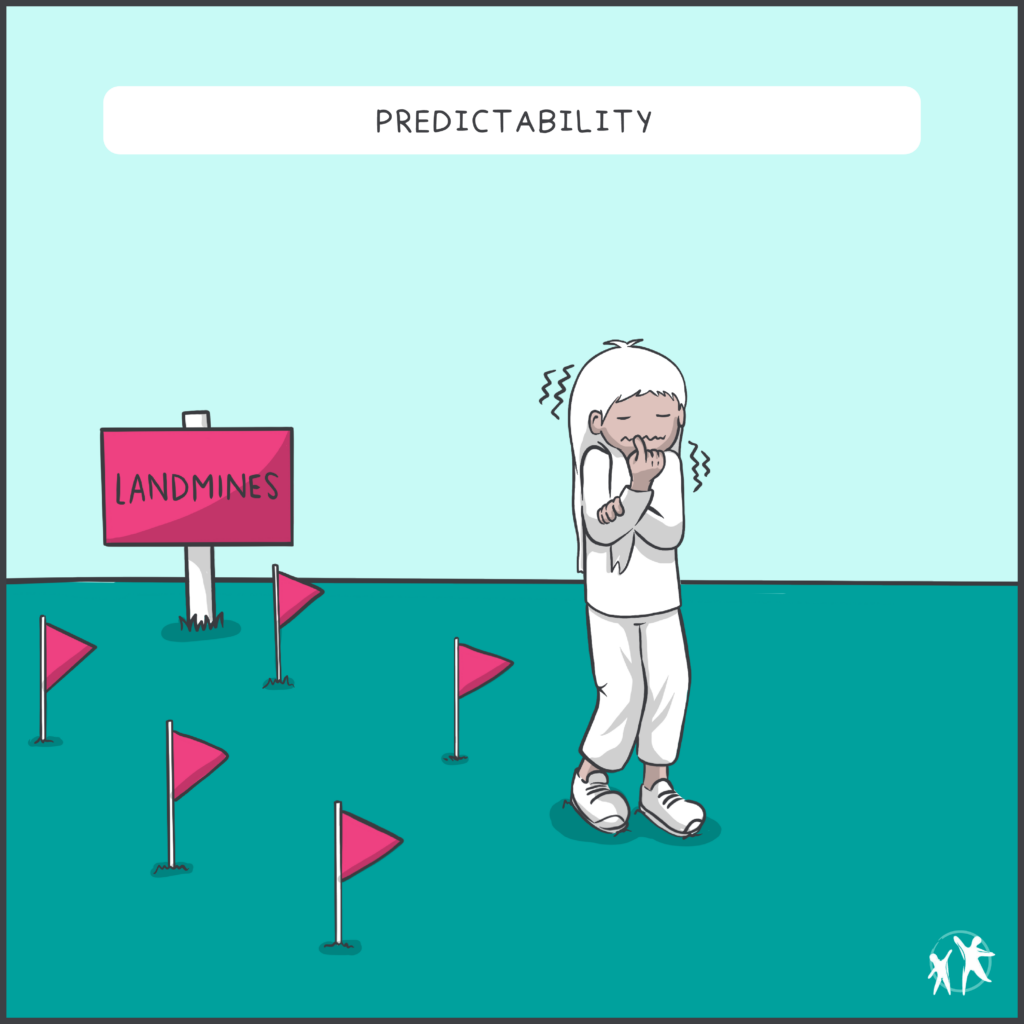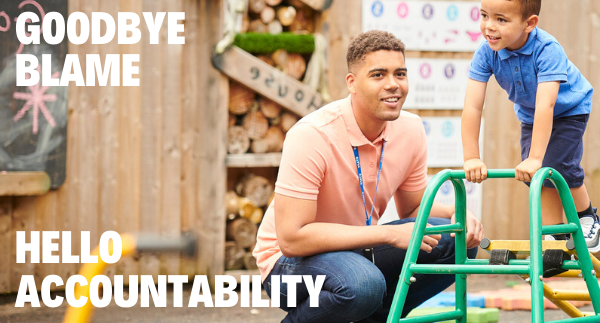
In the service, the room felt tense. Sarah, the room leader, was unpredictable. Her mood seemed to shift with the wind. Some days, she would walk in with a warm smile, offering support and praise to her team. But other days, stressed her mood would change — distant, unapproachable, and even the simplest question felt like an intrusion.
Jess, one of the Educators, often found herself tiptoeing around Sarah, unsure of what kind of reaction she might get. "Yesterday, she was so encouraging," Jess confided to another colleague, "but today, she barely looks at me, and when she does, it's like I’m bothering her. It’s exhausting not knowing who we’ll get each day." This emotional rollercoaster left Jess and the rest of the team feeling constantly on edge, anxious about making mistakes and dreading Sarah's unpredictable responses.
The unpredictable nature of Sarah’s leadership had created an environment of anxiety, where no one felt safe enough to thrive.
From Hot to Cold: The Leadership Impact of Emotional Volatility
As leaders, we all want to create a safe, supportive environment where our teams can flourish. And just as an umbrella shields you from unexpected weather, leadership provides protection and assurance through consistency and predictability. One key element in maintaining this leadership umbrella is cultivating predictable energy.
"Trust crumbles with unpredictable leadership."
So why is predictability so essential to leadership?
Because it fosters safety. When leaders are predictable in their actions, behaviours, and reactions, it creates an environment where people know what to expect.
And in a world where many things feel uncertain, having a leader who provides consistency can be a true anchor.

A study in 2019 uncovered a link between inconsistent leadership behaviours and increased employee stress and burnout. The study found that unpredictability in leadership, such as inconsistent communication, unclear expectations, and fluctuating support, contributed significantly to elevated stress levels and higher burnout rates among employees. In contrast, predictability in leadership—where leaders provided consistent communication, stable expectations, and reliable support—helped to reduce uncertainty in the workplace. This, in turn, created a healthier environment that minimized stress and improved overall well-being. The study also highlighted that workplaces with predictable leadership experienced lower turnover rates, as employees were more likely to feel secure and supported.
How Predictable Energy Creates a Safe Space
Safety is not just a physical concept; it’s deeply emotional and psychological. When people feel safe, they’re more likely to take risks, share ideas, and be honest about mistakes or challenges.
"Predictable energy builds workplace trust."
Predictable leaders foster this safe space by bringing balanced energy to the workplace.
Here’s how:
1.Emotional Regulation
Predictable leaders master emotional regulation. They don’t let personal stress or external pressures dictate how they interact with their team. Instead, they offer a steady emotional presence, which helps to create a stable working environment. Emotional stability from a leader means that team members feel free to approach without fearing an unpredictable reaction. This security encourages open communication and innovation.
2. Clear Expectations
Leaders who communicate clearly and consistently set expectations create a culture of trust. When team members know what is expected of them and understand how their leader will respond to various situations, they feel more confident in their roles. This clarity reduces confusion and uncertainty, giving team members the peace of mind needed to perform their best.
3. Routine and Structure
Creating routine in how you manage your team adds another layer of predictability. Regular check-ins, consistent feedback sessions, and a structured approach to decision-making all contribute to an environment where people feel secure. Routine allows team members to plan, prepare, and perform with the confidence that they won’t be blindsided by unexpected changes or erratic leadership decisions.
Practical Tips for Cultivating Predictable Energy
Bringing predictable energy into your leadership doesn’t require sweeping changes—it’s about small, consistent actions that build trust over time. Here are some practical steps you can take:
- Stay Calm Under Pressure: Your team will take their cues from you. When stress levels rise, make a point to stay calm. This doesn’t mean suppressing emotions, but rather processing them in a way that keeps you steady for your team.
- Be Consistent with Communication: Keep your messages and your expectations clear. Regularly communicate your goals, give feedback, and keep lines of communication open so your team knows you’re reliable.
- Show Up the Same Way Every Day: Whether you’re handling a major crisis or a routine check-in, aim to bring the same steady energy into the room. This helps establish a sense of normalcy and predictability for your team.
- Manage Reactions Intentionally: People are always watching how you respond to setbacks, challenges, and mistakes. If your team knows they can rely on you to react thoughtfully rather than impulsively, they’ll feel safer taking calculated risks.
Bringing predictable energy to your leadership umbrella is one of the simplest yet most powerful things you can do to create a safe space for your team.
As you foster this sense of predictability, you build the trust and security that allow your team to thrive. Remember, predictability isn’t about becoming robotic or lacking spontaneity—it’s about creating an environment where people feel they can depend on your leadership in every situation.
By doing this, you not only strengthen your leadership umbrella but also protect and nurture those who stand under it with you.
I'd love to hear your thoughts on this topic!
How have you seen emotional volatility affect your service? Do you agree that consistency in leadership helps build a safer, more predictable environment? Share your experiences in the comments below. Let’s keep the conversation going—I'll be responding to as many comments as I can.
Adrian Pattra-McLean is a management consultant with a Master of Education (Ed. Psychology). He is currently facilitating "The Leadership Umbrella" webinar series. 
Leave a Reply